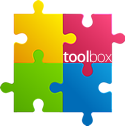Originally from Newcastle upon Tyne in Northern England I studied painting at art school. Viewing the world through the window of paint and canvas was my introduction to thinking visually.
Early influences were my friends and frequent collaborators Dave Critchley and Keith Morris, both of who influenced and taught me much about looking and, importantly, about collaboration. Art didn’t have to be a solo activity.
In England in the early 70’s, things were changing fast. We were exposed to the work of Joseph Beuys, Vito Acconci, Gilbert & George and, memorably, Bruce McLean with Nice Style. All of them influenced the way I thought and moved me away from painting and into the possibilities of combining new technologies with ways of seeing.
With the introduction of the first Sony Portapak video recording systems (black & white, reel to reel, editing not invented yet) I started working in performance and video installation and began my introduction to the world of moving images.
After leaving college I began my professional career, beginning with a position as a photographer and cameraman at the Joicey Museum in Newcastle. The Joicey focused on the social history of the area, which here meant coal mining and shipbuilding. I had a crash course in filming, documenting, and creating exhibits and multimedia installations of life in the area. Looking back, it’s where, with different tools and technologies, I learned the things I do today.
After a brief excursion into the world of theatre I pursued camerawork more broadly and, in the early 80’s, moved to the US where I worked on a wide range of video, film, and interactive projects. My strong interest in design, combining technologies and wanting to see projects through from start to finish, started to point me in a certain direction. Gradually, I made the transition into producing and directing.
At this point most projects were still being delivered as video, but I was an early and eager user of new computer technologies and software – I found them invaluable as development and visualization tools in video and film production. Simple, but revolutionary, programs such as Hypercard were amazing for building simple animated story-boarding systems that I could use to help clients (and myself) see what we were doing.
Working as Executive Producer at several production houses, taught me how to manage expectations, teams, budgets (and clients) and by the time of the Internet, Cd-ROMs and DVDs, I was already fluent in using the tools and bringing different software into the development and production process. The ability to now deliver digitally using programs such as Director opened up all sorts of new possibilities in approaching projects. And new small “portable” computers allowed me to take my tools on location.
Combined with my background in “traditional” media tools and techniques, the time was right to explore the opportunity to apply my skills and interests in a more flexible environment. And to develop approaches and methodologies for working with clients and collaborators on a global scale.
Now, I work in two main areas: I develop and deliver targeted projects for clients in Europe and the US, usually, but not always, involving video as a prime source of content. These projects are designed to be multi-functional, working on the web, on disk and designed to be scaleable.
The second area I focus on could be described as “digital delivery systems”- the design and development of replicable approaches to content development, management and distribution that constitute the “ecosystems” projects exist within.
A lot of things have come full circle. When I started it was multi-projector slide shows, Rubylith and darkrooms, combining film, photography design and sound with the tools of that era. Now its multimedia – websites and iPhones, HD video everywhere and a different set of constantly evolving potentials.
What stays the same is knowing how to listen to a client as they describe their audience and their objective, and having the experience to interpret and translate those thoughts into the right combination of approach, tools and creativity to meet their goals. And to keep changing.

 We support our work through toolbox – a series of digital “magazines” that provide relevant, shareable content that guides and re-inforces our work.
We support our work through toolbox – a series of digital “magazines” that provide relevant, shareable content that guides and re-inforces our work.